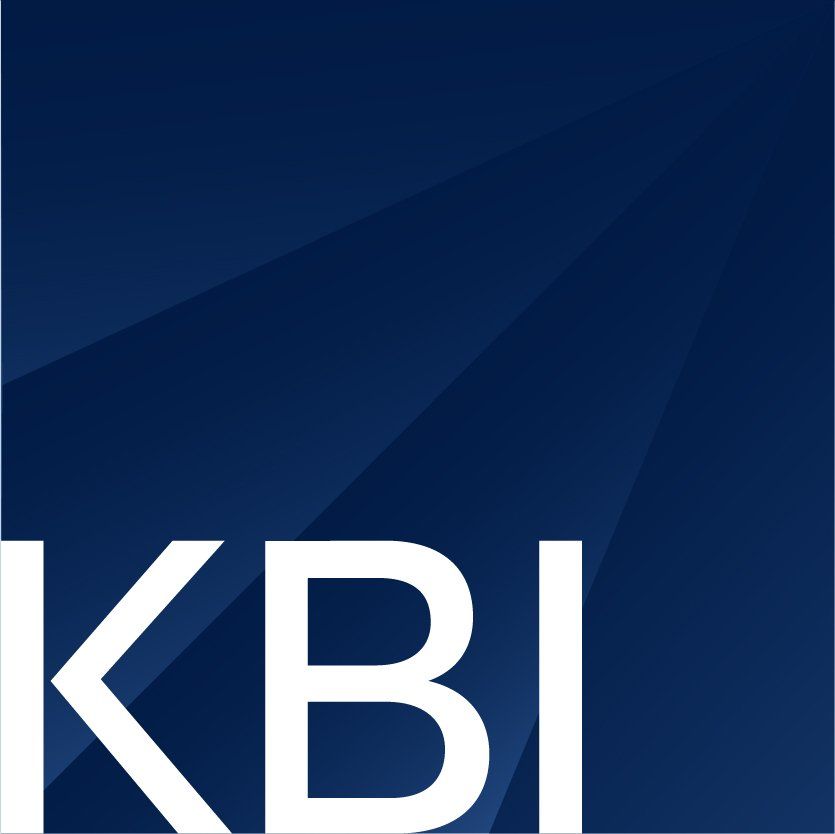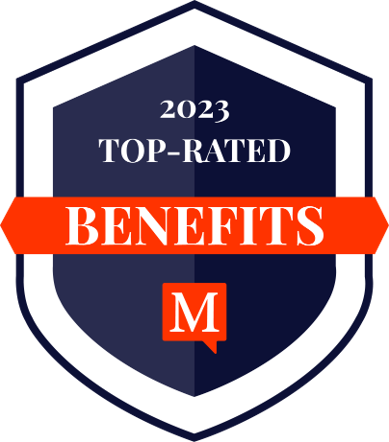
8 Reasons to Invest in HR Risk Management
13 June 2025
8 Reasons to Invest in HR Risk Management
HR risk management used to be something companies thought about only when something went wrong—an employee dispute, a compliance fine, a lawsuit. But that reactive approach no longer works in today’s business environment. With workplace laws evolving rapidly and employee expectations rising just as fast, the smartest companies are thinking about HR risk as a core part of their business strategy.
They have good reason. According to the Society for Human Resource Management (SHRM), more than 50% of organizations have faced an HR-related compliance violation in the past two years. That number doesn’t even account for other forms of risk—like turnover caused by poor culture, burnout due to lack of support, or costly mistakes made because HR systems aren’t up to date.
The bottom line? HR risk management is no longer just a back-office function. It’s a front-line defense for your business—and a smart way to build trust, save money, and stay ahead.
Here’s what HR risk management really requires, and how your business can put a stronger strategy in place.
1. Compliance: The Foundation of HR Risk Management
At the heart of any HR risk management plan is compliance. This includes staying on top of local, state, and federal labor laws related to hiring, wages, leave policies, benefits, employee classifications, workplace safety, and more. It might sound simple on paper. But in reality, compliance is one of the most complex and time-sensitive parts of HR.
From the Affordable Care Act (ACA) to the Family and Medical Leave Act (FMLA), and from anti-discrimination laws to state-specific paid leave mandates, the rulebook is long—and it’s constantly being updated.
What’s at risk if you get it wrong?
- Fines and penalties
- Lawsuits from current or former employees
- Damaged reputation and loss of employee trust
- Disruption from audits or investigations
A strong compliance strategy should include:
- An annual review of your HR policies and employee handbook
- Regular training for managers on relevant laws and procedures
- Clear documentation for hiring, onboarding, performance, and terminations
- Support from a knowledgeable HR consultant or legal expert when needed
If you’re a growing company without a full legal team, the key is to stay proactive—not reactive. Don’t wait until a complaint or audit happens to realize your handbook is out of date.
2. Onboarding and Offboarding: Where Risk Begins and Ends
The start and end of an employee’s time with your company are critical moments—not just for the employee, but for your HR risk profile. When onboarding isn’t handled properly, you risk missing key documentation like I-9 forms, wage notices, or benefits enrollment disclosures. When offboarding is rushed or incomplete, you could forget to issue final pay correctly, revoke access to systems, or provide required COBRA notices. These aren’t just clerical mistakes—they’re legal exposures.
Risk-managed onboarding includes:
- A documented checklist for every new hire
- Standardized offer letters and classification reviews
- Digital systems that automate enrollment and form collection
- A clear welcome packet outlining workplace policies and reporting procedures
Safe offboarding includes:
- Final pay and PTO calculations in line with state laws
- An exit checklist for IT, access, and asset recovery
- A termination letter with clear information on benefits and COBRA
- Optional exit interviews to capture feedback and mitigate future risk
When these transitions are smooth and well-documented, your business looks more professional—and avoids the most common employee complaints that lead to disputes.
3. Documentation and Recordkeeping: Your Best Defense
When a dispute arises—whether it’s a harassment claim, a wrongful termination suit, or a wage complaint—the side with the strongest documentation usually wins. Unfortunately, many businesses don’t realize how important consistent documentation is until it’s too late.
Strong documentation includes:
- Signed employee handbooks and policy acknowledgments
- Written records of performance reviews, warnings, and disciplinary action
- Time-off requests, accommodation discussions, and investigation findings
- Emails and memos summarizing key decisions or employee concerns
You don’t need a mountain of paperwork. You just need a consistent, organized system—ideally digital—that allows you to pull up any record quickly if needed.
Bonus tip: If you’re still relying on spreadsheets or physical files, it’s time to upgrade to a secure HR platform with cloud-based storage and audit trails.
4. Workplace Culture: A Hidden Source of HR Risk
Culture may not show up in your compliance checklist, but it’s one of the most powerful—and underestimated—drivers of HR risk.
If employees feel like HR won’t protect them, or if leaders tolerate toxic behavior, you’re at high risk for claims of harassment, retaliation, or discrimination. You may also face higher turnover, burnout, and absenteeism—each of which carries its own cost.
A culture that reduces risk includes:
- A clear code of conduct and zero-tolerance harassment policy
- Anonymous reporting channels that employees trust
- Manager training in communication, bias awareness, and documentation
- Regular pulse surveys to spot issues before they escalate
Building this kind of culture takes time, but it’s one of the most effective ways to reduce legal claims and build loyalty. When employees believe they’re being treated fairly, they’re more likely to raise concerns internally instead of turning to outside legal help.
5. Mental Health and Wellbeing: The New Frontier of HR Risk
Today’s workforce is under more pressure than ever. Burnout, anxiety, and stress are no longer fringe topics—they’re workplace realities. When mental health isn’t supported, the risks show up fast: more time off, more turnover, more mistakes, and even more workplace conflict. That’s why more employers are viewing mental health support as a risk management tool, not just a nice-to-have perk.
Steps to reduce risk through wellbeing support:
- Offering access to an Employee Assistance Program (EAP)
- Training managers on how to support stressed or overwhelmed employees
- Ensuring benefit plans include mental health coverage
- Promoting a culture that normalizes breaks, time off, and work-life balance
When employees feel supported, they’re more likely to communicate challenges early—before they result in disengagement, absenteeism, or serious issues that affect your entire team.
6. Manager Training: Your First Line of Defense
Many HR problems don’t start in HR—they start with frontline managers. If your managers aren’t trained in basic employment law, conflict resolution, and documentation, they may accidentally create risk for your company.
The most common issues?
- Mishandling accommodation requests
- Making inappropriate comments
- Misclassifying exempt vs. non-exempt roles
- Failing to escalate employee concerns
Manager training should cover:
- How to handle employee complaints or concerns
- What documentation is required during performance reviews
- How to navigate leave requests or workplace accommodations
- How to model the company’s code of conduct
Even a simple quarterly training session can go a long way in protecting your business and strengthening your leadership team.
7. HR Technology: Risk Reduction Built Into Your Systems
Manual HR processes are a major source of error—and risk. From missing deadlines to misfiled documents, it’s nearly impossible to manage compliance with paper forms and email reminders. That’s why smart HR risk management includes upgraded digital systems.
These platforms can:
- Automate timekeeping and classification compliance
- Send alerts for expiring I-9s or missed ACA filings
- Keep a digital paper trail for audits and investigations
- Provide dashboards to monitor engagement, turnover, and policy usage
You don’t need to buy the most expensive software on the market. You just need a platform that simplifies the things you do most—safely and securely.
8. Proactive Reviews: The Secret to Staying Ahead
Most HR teams know what they’re supposed to do—but the real challenge is making time to do it consistently. That’s why the most risk-ready companies build in quarterly and annual HR reviews as part of their business calendar.
A quarterly HR risk review might include:
- Policy updates based on new regulations
- Benefits usage and compliance check
- Open cases or unresolved employee issues
- Feedback from employee surveys or exit interviews
These reviews don’t need to be long or formal. They just need to be regular. Making space to assess your HR health ensures you’re never blindsided—and always ready for what’s next.
HR Risk Management supports a healthier workplace by reducing legal exposure and improving employee trust.
What HR Risk Really Costs Your Business
Still not sure how much HR risk management matters? Check out this piece on even more benefits of leveraging a HR Consulting expert like KBI Benefits.
It’s important to consider the costs of doing nothing:
- One discrimination lawsuit can cost over $100,000 to settle
- A single DOL audit can result in six-figure fines
- Losing a great employee to burnout or a toxic culture could cost double their salary to replace
- Poor documentation could leave you defenseless in any legal dispute
When you manage HR risk well, you don’t just avoid problems—you strengthen every part of your organization.
How KBI Benefits Helps You Manage HR Risk
Let our human resources consulting team help you minimize risk and build a stronger, more compliant workplace—without adding extra burden to your day.
With KBI Benefits, you’ll have access to:
- A custom employee handbook you can build in minutes
- Sexual harassment and workplace conduct training
- One-on-one support from certified HR professionals
- Practical tools and templates to streamline everyday HR tasks
- We don’t just offer advice—we become an extension of your team. Whether you need help staying compliant, managing employee relations, or building a people-first culture, we’re here to support your growth.
Contact us today to get started. Let’s simplify your HR—and protect what matters most.
People Also Ask
What is HR risk management?
HR risk management is the process of identifying, assessing, and reducing potential legal, financial, cultural, and operational risks that arise from managing people in the workplace. It covers everything from compliance and documentation to employee behavior, health, safety, and engagement.
What are the biggest HR risks for small businesses?
The most common HR risks for small businesses include wage and hour violations, misclassification of employees, poor documentation practices, discrimination claims, and compliance failures related to benefits, leave, and safety policies.
How do I reduce HR risk in my company?
To reduce HR risk, regularly review and update your HR policies, provide manager training, maintain clear documentation, implement digital HR systems, support employee wellbeing, and work with an experienced HR consultant or benefits partner.
Do I need an HR risk assessment if my team is small?
Yes. Even small teams are subject to labor laws and workplace risk. In fact, smaller businesses often face greater exposure because they don’t have in-house legal or HR resources. A risk assessment helps you identify gaps before they become liabilities.
How often should I review HR compliance policies?
At minimum, you should review your HR and benefits compliance policies annually. However, if new laws are passed or your company undergoes rapid growth, acquisitions, or organizational changes, a mid-year review is also recommended.
Final Thoughts: HR Risk Management Is About Leading Smarter
When HR runs smoothly, people thrive. And when people thrive, businesses grow. Managing HR risk isn’t about fear—it’s about foresight. The more proactive your approach, the fewer disruptions you face, and the more confident your team becomes. You don’t need to do it alone. With the right tools and the right partner, HR risk management becomes a source of strength—not stress.






